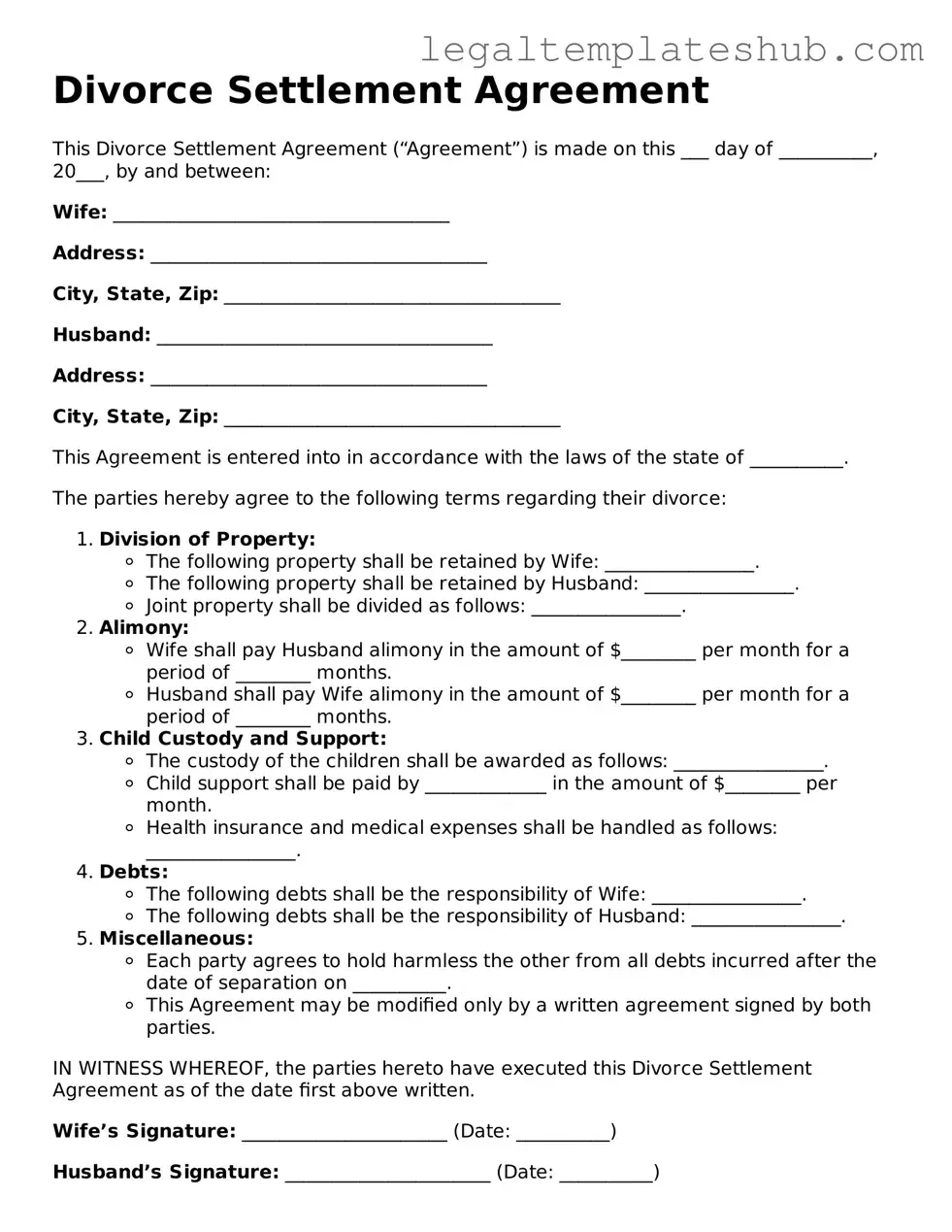Printable Divorce Settlement Agreement Template
The Divorce Settlement Agreement form is a legal document that outlines the terms of a divorce, including asset division, child custody, and support arrangements. This form serves as a crucial tool for both parties to ensure a clear understanding of their rights and responsibilities post-divorce. To streamline your process, consider filling out the form by clicking the button below.
Access Editor
